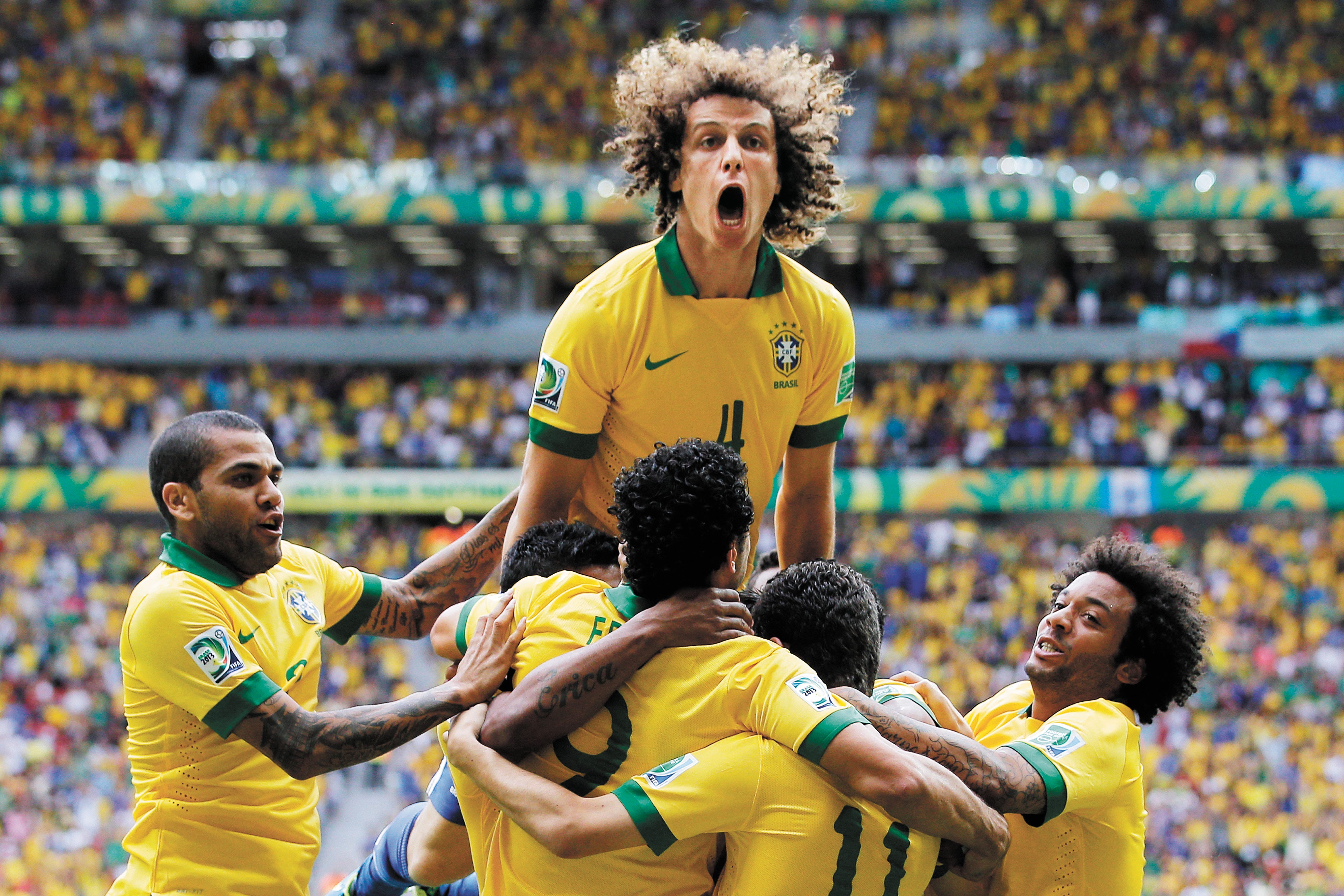Do nations, like products, have brands? Yes, says Wharton Professor David J. Reibstein. He teamed with U.S. News & World Report and WPP’s BAV Consulting on the “Best Countries” study to help the world understand why nations brand—and how nations’ brands can be improved.
On October 28, 2016, Professor Reibstein will present his conclusions when he hosts the Wharton Nation Brand Conference in Philadelphia. The conference will gather policymakers, executives, and academics to discuss what nations do that affects their brands and how that affects their economies.
With the 2016 Summer Olympic Games to be hosted in Rio de Janiero, Reibstein and his team apply the lessons of the Best Countries study to Brazil, one of the most dynamic and confounding brands in the Western Hemisphere.
1. Brazil’s Brand Perceptions
Brazil is a study in extremes. Boasting a population of almost 207 million and the sixth-largest economy in the world, the nation drew 3.5 million attendees to the 2014 World Cup. However, one in four Brazilians lives below the poverty line. Brazil’s brand holds two identities in conflict: beautiful, sexy, and fun vs. poor, corrupt, and out-of-control. More than 16 million people—8.5 percent of the population—subsist on less than $1.30 per day. Former president Luiz Inácio Lula da Silva has been indicted on corruption charges. Brazil lost an estimated average of 17,000 square kilometers of rainforest per year in the 1990s and 2000s. How do these contrasts affect Brazil’s ranking among the Best Countries?
An answer comes from the Best Countries survey. Wharton and Huntsman alum Anna Blender W07 took a leading role. A Senior Vice President of BAV, Blender teamed with Professor Reibstein in 2015 to apply BAV’s “BrandAsset Valuator” Model of Brand Building to nations. Together with Jeffrey Cai GRW15 and Wharton SEI Center Senior Fellow Bruce Brownstein W80, they studied the financial return that nations can expect from nation branding efforts.
Next, Reibstein and Blender joined forces with BAV’s CEO John Gerzema, in consultation with U.S. News, to create the Best Countries study. The criteria the team chose included GDP, tourist arrivals, foreign direct investment inflows, and human development. For the 60 top-scoring nations, the team surveyed more than 16,000 global participants, asking about 65 core brand attributes—such as bureaucracy, strength of international alliances, sexiness, economic stability, religious freedom, gender equality, and richness of history. The team grouped the 65 attributes into nine general subrankings that reflect how the nations were perceived in terms of (1) Adventure, (2) Citizenship, (3) Cultural Influence, (4) Entrepreneurship, (5) Heritage, (6) Movers (up-and-coming economies), (7) Open for Business, (8) Power, and (9) Quality of Life. The overall Best Countries rankings were derived from nations’ scores in the nine subrankings.
The team released the results at a well-branded conference: the 2016 World Economic Forum in Davos, Switzerland. To the consternation of many Americans, including late-night television host Jimmy Kimmel in an opening monologue, the U.S. ranked only fourth. Brazil ranked No. 20.
Why should Brazil care? Because, according to Reibstein, it affects their economy just as brands for companies affect their sales and profits. Why did Brazil end up so far down? After all, it ranked highest in fun, sexiness, and beauty, as well as No. 1 in Adventure. What’s more, only New Zealand and Australia ranked higher than Brazil for happiness. In the subranking of Cultural Influence, Brazil was behind only France, Italy, the U.S., Spain, the U.K. and Japan. What perceptions brought down Brazil’s overall score?
Citizenship, for one thing. Brazil ranked No. 25 in that category. It came in close to last for caring about the environment. Brazil ranked No. 29 for Entrepreneurship, No. 37 for Open for Business and No. 43 for Quality of Life; and close to last for the attributes of well-developed public education and health systems, transparent government practices, and income equality. Brazil’s average per capita GDP ($11,600 in 2011) ranks it 100th in the world. As Naercio Menezes, professor of economics at the University of Sao Paulo, told the BBC, “Brazil is one of the most unequal countries on the planet. . . . If you are born into a poor family it is very difficult for you to eventually become rich.”
2. Rebuilding Brazil’s Brand
Brazil’s efforts to strengthen its brand might include a two-pronged approach: (1) solving its complex problems; and (2) publicizing its repertoire of strengths. The nation could see an immediate brand upside by raising its global perceptions for caring about the environment. Among the nine subrankings, Citizenship (of which caring about the environment is a component) has a significant correlation to Gross Domestic Product purchasing power parity per capita: 16.94%.
Some of Brazil’s efforts to improve its environmental reputation are showcased in a book by John Gerzema and Professor Reibstein about the Best Countries study, Best Countries: Defining Success and Leadership in the Twenty-First Century. In an interview published in the book, Luis Alberto Figueiredo Machado, Brazilian ambassador to the U.S., asserted that although deforestation remains a problem, this is an area in which Brazil has been making remarkable progress. Figueiredo said that Amazonian deforestation fell by 82 percent between 2004 and 2014.
However, improving Brazil’s environmental reputation is just one piece of its brand puzzle. Unfortunately, its reputation for Adventure only has a 3.24% correlation to GDP purchasing power parity per capita. More important would be to raise Brazil’s low scores for Entrepreneurship (17.42% correlation), Open for Business (11.99% correlation), and Quality of Life (16.89% correlation).
Still, Brazil has reason for optimism. Among those countries with more than half the population living in nonurban areas, Brazil trails only Argentina in the attributes of connectivity, access to capital, and developed infrastructure. In addition, Brazil launched a multi-billion dollar social welfare program called “Brazil Without Misery” to eradicate extreme poverty.
Brazil’s brand can also capitalize on the nation’s many perceived strengths. The country has long been included in the BRICS bloc of nations, comprising 42 percent of the world’s population. The BRICS alliance helps the member countries develop and bolster their economies.
Brazil’s continued bid on the world stage is recognized in the Best Countries rankings. Brazil was ranked No. 11 for political influence, behind such countries as India and South Korea but above Indonesia and Sweden. Brazil also ranked No. 6 in the Movers subranking—evidence of Brazil’s perceived opportunity to prosper.
3. Lessons to Learn at the Wharton Nation Brand Conference
As Rio prepares to host the Olympics—while fending off the mosquito-borne Zika virus and fishing garbage from the venue’s still-befouled waterways—it’s anyone’s guess whether lightning will strike twice and deliver another mega-event to rival the World Cup. Skeptics refer to the long-running joke, “Brazil is a country of the future, and it always will be.”
What holds true for Brazil holds true for every country: It is vitally important from an economic standpoint how others perceive our nations.
Tom Lincoln is a consultant and attorney in Philadelphia.
Published as “Brazil’s Two Brands” in the Spring/Summer 2016 issue of Wharton Magazine.
























